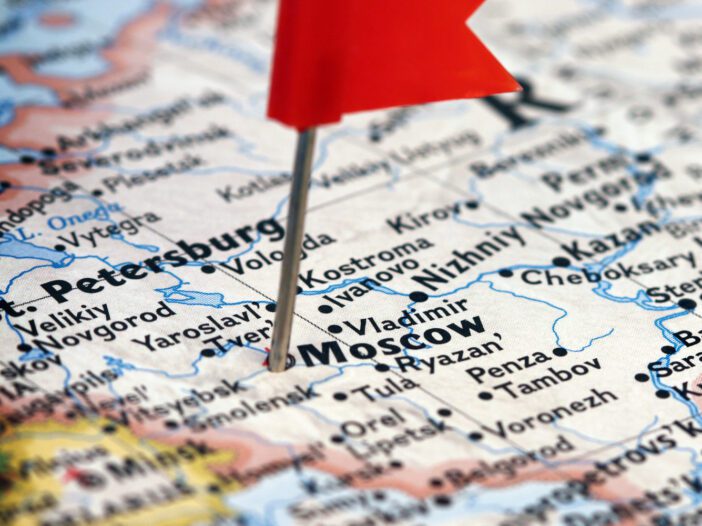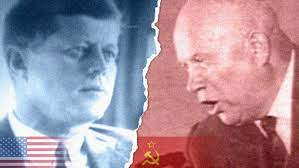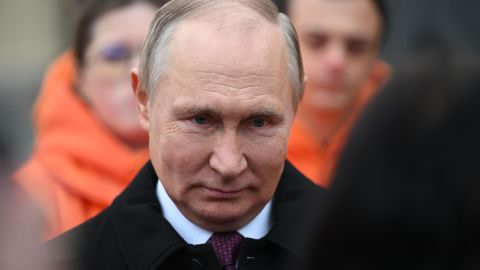The key to avoiding nuclear war is simple — avoid escalation.
This was demonstrated in the Cuban Missile Crisis when the US and Soviet Union were on an escalating path leading to nuclear war. Both sides relented.
|
|
|
Source: CBC |
The Soviets agreed to remove their missiles and bombers from Cuba, and the US agreed to remove some Jupiter missiles from Turkey. The US also agreed not to invade Cuba again, as it had done at the Bay of Pigs in 1961. De-escalation prevailed, and nuclear war was averted. The lesson ever since for nuclear powers is to avoid direct confrontation and do not escalate.
These decades of experience, training, and study suddenly seemed obsolete after the dissolution of the Soviet Union in 1991. The Cold War was over. The US had won. A Russian Federation emerged from the former Soviet Union. There was no more talk of nuclear war except with respect to the ambitions of rogue nations like North Korea and Iran. The days of scenario planning for nuclear war between the US and Russia were over.
The superpowers began cooperating on the removal of nuclear weapons from parts of the former Soviet Union, including Ukraine. US experts descended on Moscow to promote central banks, stock exchanges, IPOs of state-owned enterprises, and democratic norms.
A young cadre of Russian experts emerged in the 1990s, including Jeffrey Sachs, Fiona Hill, Victoria Nuland, and George P Kent, convinced that Russia was on a path of democratic capitalism and would soon be ‘just like us’.
But Russia is not like us
The fantasy ended in ruin in the late 1990s. Instead of the liberal-democratic pipedream, Russia looked more like Chicago in the 1920s, with gangsters shooting each other in the streets with machine guns or using more exotic techniques like radioactive poisoning. The public companies ended up in the hands of a small number of oligarchs who became billionaires exploiting Russia’s resources.
The country was bordering on chaos in the late 1990s when the alcoholic Boris Yeltsin resigned as president, and Vladimir Putin stepped in as acting president on 31 December 1999. Putin has been president or prime minister of Russia ever since and has restored order and saved Russia’s economy, albeit through autocratic means.
The expert cadre, including Hill, Nuland, and Kent, felt betrayed by Putin, and have sought his removal ever since. In fact, the experts’ plan was always a pipedream. The hubris was theirs. Putin actually saved Russia, but the experts won’t admit it. They are now the core of the warmonger party in the US, along with Susan Rice, Antony Blinken, and Jake Sullivan. Biden is their willing puppet.
|
|
|
Vladimir Putin, President of the Russian Federation, has taken a measured approach to discussion of nuclear weapons in the Ukrainian context. He has consistently adhered to existing Russian doctrine. In contrast, Joe Biden and his advisors have been reckless in their rhetoric. Source: Reuters |
The situation today
Talk of nuclear war between the US and Russia because of Ukraine has emerged over the past year. It’s a shocking development after 30 years, during which nuclear weapons and nuclear war between superpowers were almost forgotten.
What is as disconcerting is the fact that the discussion of nuclear war is casual, almost flippant, and carries none of the seriousness with which the topic was formerly addressed.
It also carries no comprehension of the existential consequences and sheer horror that the use of nuclear weapons entails. It’s almost as if the warmongers in and around the White House were playing a game of chicken without realising the other driver had no intention of changing course.
All nuclear war experts warned that such a war would emerge from lesser events that took on an escalatory dynamic. Herman Kahn developed a 44-step escalation ladder to illustrate the point and to guide policymakers away from escalation.
Here are some of Kahn’s key points (using his original numbering sequence):
1. Ostensible crisis
2. Political, economic, and diplomatic gestures
4. Hardening of positions — confrontation of wills
6. Significant mobilisation
7. ‘Legal’ harassment — retortions
9. Dramatic military confrontations
12. Large conventional war (or actions)
13. Large compound escalation
14. Declaration of limited conventional war
15. Barely nuclear war
16. Nuclear ‘ultimatums’
18. Spectacular show or demonstration of force
19. ‘Justifiable’ counterforce attack
20. ‘Peaceful’ worldwide embargo or blockade
21. Local nuclear war — exemplary
22. Declaration of limited nuclear war
23. Local nuclear war — military
Kahn’s checklist contains much more, including step #44, which is a full-scale global nuclear war. Kahn also wrote this in a generalised fashion; any particular confrontation will have its unique elements and sequence.
We’re halfway there already
It requires no special training to see the escalatory dynamic in Ukraine tracks Kahn’s scenario closely. In particular, step #6 tracks the Russian mobilisation, and step #7 tracks the reciprocal economic and financial sanctions, including the seizure of bank accounts and property. When the discussion turns to the use of dirty bombs and tactical nuclear weapons, which it has, we are nearing items 15–22 on Kahn’s list.
Based on this clinical analysis, a limited nuclear war is a real possibility in the not-too-distant future.
What are the elites and warmongers in the US saying about this? They’re acting like kids playing in a sandbox instead of serious policymakers.
Their first mistake is a cavalier approach. On 6 October 2022, Joe Biden told a group of billionaires at a fundraiser, ‘We have not faced the prospect of Armageddon since Kennedy and the Cuban Missile Crisis’.
Did Biden do this in an Oval Office address? Or in a joint address to Congress? No, he did it casually over drinks at a fundraiser. Was it the first thing he said? No, he mentioned Armageddon en passant after going down a list of Democratic talking points about abortion and gender transitions.
This was not serious. It was reckless. It was also dangerous.
Now the US elites have started psychological operations (psyops) aimed at Putin with nuclear weapons as the bait. They claim that Putin has threatened to use tactical weapons in Ukraine and possibly other parts of Eastern and Central Europe. That’s a lie; Putin never said that.
When asked, both Putin and Prime Minister Dmitry Medvedev said that if attacked, Russia would defend itself by all means necessary — including the possible use of nuclear weapons.
That’s not news. That has been Russian or Soviet policy since the early 1950s. It has also been US policy since then. Neither side has ever renounced the first use of nuclear weapons. Putin’s expected answer to a question posed has been turned into a threat he never made. This is US and UK propaganda at its worst (and most dangerous).
False flag accusations are the false flags
The lie about Putin’s intentions quickly morphed into another psychological operation (psyop) about a ‘false flag’ operation. That’s when you stage an attack disguised to look like an attack by your enemy in order to justify your own ‘retaliation’, which you were planning all along.
The narrative that Putin would use nukes or conduct a false flag operation morphed into a related narrative that Putin would use a ‘dirty bomb’. In effect, Putin would detonate a dirty bomb and then blame the Ukrainians and Americans.
A dirty bomb is not a nuclear weapon — but it does employ radioactive material wrapped around conventional explosives. When detonated, the radioactive material is dispersed and can poison or kill any people or livestock in the area. It’s akin to what happened at Chernobyl in 1986. That nuclear reactor meltdown was an accident, not a bomb. But the effect of spreading radioactive material was similar to a dirty bomb.
Not to be outdone, the Russians countered by saying the US or Ukraine would conduct the false flag by detonating a dirty bomb and then blaming the Russians as an excuse to escalate Western involvement in Ukraine.
At this point, we have both sides warning the other side will conduct a false flag with a dirty bomb in order to justify their pre-planned escalation. If a dirty bomb does go off, each side will blame the other, and the truth will be a casualty of war.
Looking ahead
It’s difficult to know what comes next. It could be that Russia uses a tactical nuclear weapon. Russia might detonate a dirty bomb and blame Ukraine. The US may use a tactical nuclear weapon if it suspects Russia is about to do so, an example of a first-strike advantage. The US may detonate a dirty bomb and blame Russia in a classic false flag operation.
Either way, it’s not difficult to know that we’re on a path to nuclear war. All the actions of both sides conform to Kahn’s escalation ladder. We also know that Putin doesn’t bluff. When George W Bush raised NATO, Putin invaded Georgia. When Obama staged a coup in Kyiv, Putin annexed Crimea. When Biden green-lighted a Ukrainian assault in Donbas, Putin invaded Ukraine.
So again, Putin doesn’t bluff. It would take a policymaker as blind as Nuland or as senile as Biden to believe otherwise. Still, we are sleepwalking down a road that leads to Armageddon.
All the best,
 |
Jim Rickards,
Strategist, The Daily Reckoning Australia
This content was originally published by Jim Rickards’ Strategic Intelligence Australia, a financial advisory newsletter designed to help you protect your wealth and potentially profit from unseen world events. Learn more here.



